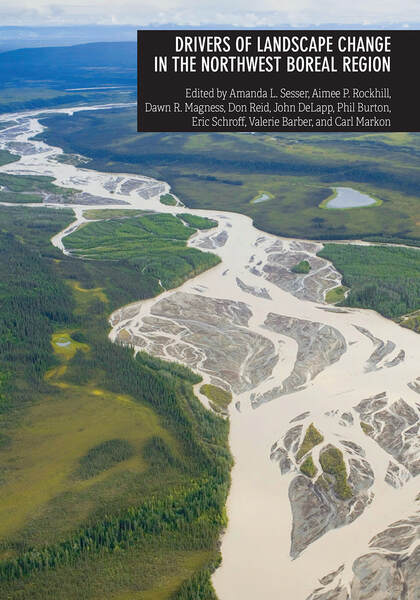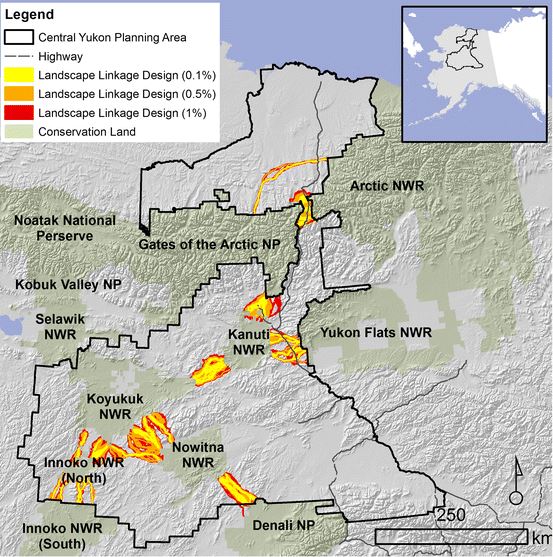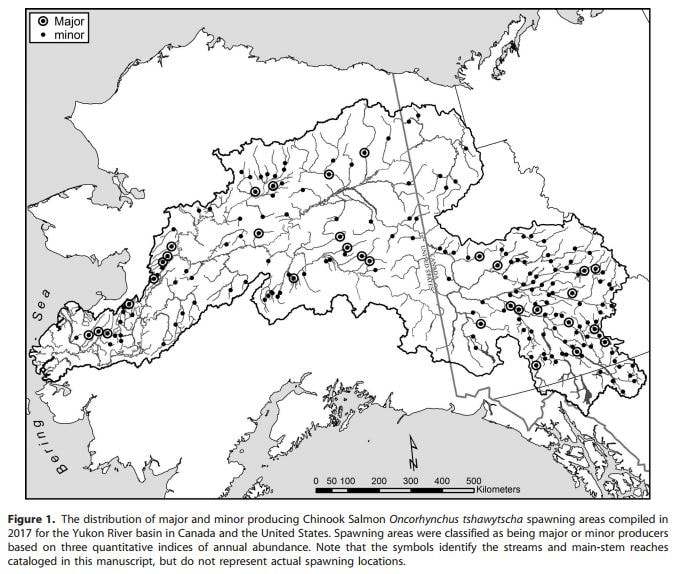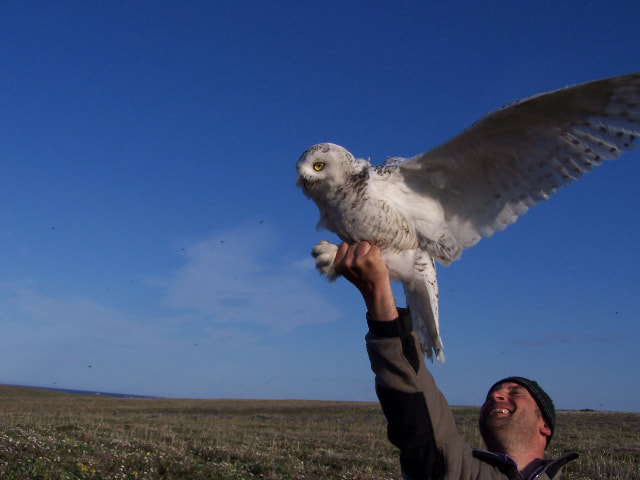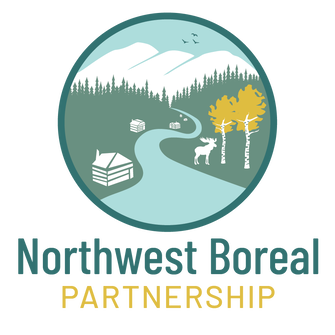New Course Offering - Indigenous Land Stewardship: Creating Meaningful Collaborations across Alaska7/22/2021
In line with the Northwest Boreal Partnership's commitment to support collaborative conservation and Indigenous-led initiatives, we are excited to share with you a new course: Indigenous Land Stewardship: Creating Meaningful Collaborations across Alaska. This course has been co-created with the US Fish and Wildlife Service, Alaska Pacific University, Alaska Conservation Foundation, and Northern Latitudes Partnerships. Partnership Director Leanna Heffner will co-teach the class along with five Indigenous scholars and leaders.
Course Description This is an 11-week course intended to create welcoming, respectful spaces, dialogues, and productive collaborations with Tribes, Indigenous peoples, land managing and conservation agencies and organizations. The course will include topics on the History of Land Management in Alaska, Equity and Inclusion, Indigenous Land Stewardship, and Collaborating Meaningfully with Indigenous Communities & Partners. The course aims to serve land and wildlife managing agencies, Tribal councils and staff, non-profit organizations, and graduate and undergraduate environmental science students. The course is developed by the Indigenous Collaborations Program - a partnership of the U.S. Fish and Wildlife Service (FWS), Alaska Pacific University (APU), Northern Latitudes Partnerships (NLP), and Alaska Conservation Foundation (ACF). Course Instructors The course will be team taught by Beth Leonard, Deg Xit’an Athabascan (APU), James Temte, Northern Cheyenne Tribe (APU/Alaska Native Tribal Health Consortium), Crystal Leonetti, Yup’ik (FWS), Danielle Stickman, Dena’ina and Koyukon Athabascan (ACF), Leanna Heffner, Jewish, Norwegian, Germanic/French (NLP/ACF), and Casey Ferguson, Cup’ik (APU/NLP). Guest speakers will include Indigenous experts (Elders and emerging youth leaders) who are leading dialogues on decolonization and racial equity, and professionals who work for or closely with Tribes and Indigenous Organizations on science and conservation challenges. Dates/Time September 24, 2021 – December 10, 2021 Classes will be on Fridays from 10:00–12:00 AKT and offered in-person on the APU campus in Anchorage with the option to join remotely via video/phone on Zoom. First and last class sessions will be 8 hours in-person. Travel expenses for these 2 sessions are limited and may be compensated. Continuing Education Units Alaska Pacific University offers for credit and continuing education units (CEU’s) professional development courses in conjunction with outside third-party agencies. Participants who successfully complete this course will be awarded three (3.0) CEUs. To Register Please send an email to James Temte at [email protected] with the subject “Indigenous Land Stewardship Course Registration.” The cost of the course is $110 to cover the APU transcript fee for CEU’s. Registration will be open until the course is filled. The class size will be limited to 30 students. For More Information, Contact: James Temte at Alaska Pacific University at 907-564-8243 or [email protected] We're excited to announce an upcoming webinar:
“What's changing on our lands, what's driving these changes, and what can we do about it? A new tool from the Northwest Boreal Partnership to inform sustainable management, stewardship, and research in the north” Please save the date to join us May 11 at 10am AKT or May 13 11am AKT to learn more about the recently released book, Drivers of Landscape Change in the Northwest Boreal Region. This book, co-authored by 65 experts in Alaska and northwest Canada, addresses what is driving change in our lands, waters, and wildlife, and includes impacts, future projections, information gaps, and implications for management and ways of life for Indigenous and rural communities. Topics include climate change, wildfire, permafrost thaw, land cover change, invasive species, resource extraction, socioeconomic drivers, and practices of co-production of knowledge. Six of the book’s contributors will provide highlights from the book and how this valuable tool can inform your work in land management, resource stewardship, and research. We will have two duplicate webinars, one on May 11 at 10am AKT (11am PT) through the Alaska Center for Climate Assessment and Policy (ACCAP), and one on May 13 at 11am AKT (12pm PT) through Yukon’s Science Community of Practice (SCoPe). Feel free to pick the date that works best for you! To join the webinar on May 11 at 10am AKT hosted by ACCAP please register online ahead of time to get the webinar link. To join the webinar May 13 at 11am AKT hosted by Yukon SCoPe please use the zoom link below. Speakers: Amanda Sesser, 21Sustainability Torre Jorgenson, Alaska Ecoscience Scott Slocombe, Wilfrid Laurier University Nancy Fresco, International Arctic Research Center Annette Watson, College of Charleston Douglas Clark, University of Saskatchewan ----------- (May 13 Yukon SCoPe hosted webinar Zoom info) https://us02web.zoom.us/j/83598332322?pwd=Z29kWVBabXpsR2swa3NnVHM1UUFodz09 Meeting ID: 835 9833 2322 Passcode: 438720 One tap mobile +12042727920,,83598332322#,,,,*438720# Canada +14388097799,,83598332322#,,,,*438720# Canada Dial by your location +1 204 272 7920 Canada +1 438 809 7799 Canada +1 669 900 9128 (San Jose) +1 253 215 8782 (Tacoma) Meeting ID: 835 9833 2322 Passcode: 438720 Find your local number: https://us02web.zoom.us/u/keyYc4NJWe
A new paper explores strategies for communicating about climate change. Building off experiences in Canada, the paper, Seven Strategies of Climate Change Science Communication for Policy Change: Combining Academic Theory with Practical Evidence from Science–Policy Partnerships in Canada, provides tested science communication strategies.
From the paper’s abstract: “Climate science communicators would benefit from a synthesized list of messaging strategies that is accessible and practical, but still supported by robust theory. We conducted interviews with participants in partnerships between climate scientists and climate policy makers in Canada. This revealed a number of favoured messaging techniques, which we then analyzed through the lens of communication theory (based on a combination of relevant literatures). The result is a set of seven ready-to-use science–policy messaging strategies vetted both empirically and theoretically.” The paper is published in the Handbook of Climate Change Communication: Vol. 2, part of the Climate Change Management book series (CCM).
We used geodiversity to design structural connectivity between approximately 55 million acres of National Park Service (NPS) and National Wildlife Refuge System (NWRS) lands in Northern Alaska. We use the term landscape linkage to describe structural corridors between the conservation units. The term linkage has been defined as specific lands that maintain the ability of multiple species to move between wildland blocks (Beier et al. 2008).”
You can read the article here. Authors: Dawn R. Magness Amanda L. Sesser Tim Hammond
Our primary objective in this study was therefore to document and map Chinook Salmon spawning areas throughout the Yukon River basin by using a wide range of data sources. Our secondary objective was to highlight the largest populations by classifying spawning areas as either major or minor producers based on three indicators of abundance…”
The article, Catalog of Chinook Salmon Spawning Areas in Yukon River Basin in Canada and United States is published in the Journal of Fish and Wildlife Management. Authors: Randy J. Brown,* Al von Finster, Robert J. Henszey, John H. Eiler R.J. Brown, R.J. Henszey
In winter, relatively few people live in these mountainous boreal regions, which included Denali National Park and the Yukon River Flats. Although the authors were not able to visit the wintering areas when the birds were there, they did get information from biologists and other people working in these regions, and suspect that these Snowy Owls were moving in search of high abundance of snowshoe hares and ptarmigan. There is still much to be learned about how the Owls get through this season.”
The research, “Seasonal Movements of Female Snowy Owls Breeding in the Western North American Arctic,” is published this month in the Journal of Raptor Research. The Northwest Boreal Landscape Conservation Cooperative is pleased to announce the launch of the Northwest Boreal Science and Management Research Tool. https://aknwc.databasin.org/sciencebase
Explore thousands of curated scholarly articles, state and federal resource reports, land management plans, and more. Each entry includes geographic information about the area of study, allowing users to draw a box on a map to narrow searches to information directly related to a specific region in Alaska, the Yukon, British Columbia, and Northwest Territories.This project is a collaboration among Alaska Resources Library & Information Services (ARLIS), Alaska Climate Science Center, DataBasin, and Northwest Boreal Landscape Conservation Cooperative. This webinar shows how to use the NWBSMRT |
|
Thank You
The Northwest Boreal Partnership would like to thank our generous core funders: the Volgenau Foundation, Alaska Conservation Foundation, National Science Foundation, Network for Landscape Conservation, and the U.S. Fish & Wildlife Service. Photos for this site provided by U.S. Fish & Wildlife Service and Tanana Chiefs Conference. |
Learn More
Questions about the Northwest Boreal Partnership? Contact Us Join our e-mail list for newsletters and announcements! Sign up Here Learn more about our network of regional partnerships in the north: The Northern Latitudes Partnerships |
Copyright Northwest Boreal Partnership © 2021

